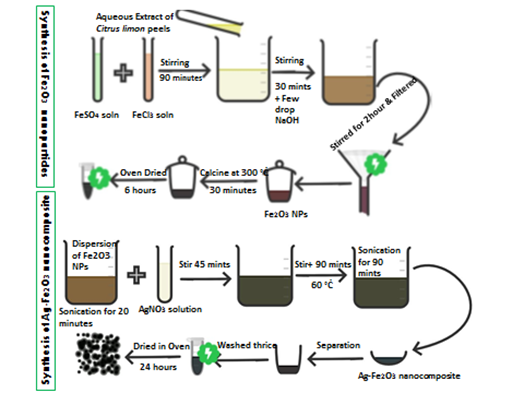
In current study environment benign silver-iron oxide (Ag-Fe2O3) nanohybrid structures are fabricated as catalyst for CR dye decolorization. Industrial wastewater stream possesses several toxic dyes which are toxic carcinogen pollutants cause severe environmental disorders. Detoxification of Congo Red dye is carried out by silver-iron oxide nanohybrid structures having latent catalytic efficiency for dye decolorization. Silver iron oxide nanohybrid materials are fabricated from AgNO3, FeSO4/ FeCl3 and Citrus limon aqueous extract by doping AgNPs on Fe2O3 materials. For characterization of Ag-Fe2O3 nanostructures, UV-Visible, X-ray diffraction (XRD), Scanning electron microscope (SEM) and Fourier transform infrared (FT-IR) techniques are used. The crystallite size is measured from Debye Scherer equation and average size calculated is 54.3 nm. Furthermore, UV-Visible spectrophotometer is used to study the catalytic efficiency of Ag-Fe2O3 nanohybrid material which is observed to be >80% within 10 minutes. Moreover, parameters like contact time, dosage of catalyst, temperature and pH are measured to optimize reaction conditions for the dye degradation by adding prepared nanohybrids. The kinetic studies were performed for the degradation reaction and were originate to follow first order kinetics. Reusability test is also applied to check the stability of nanohybrid catalyst that affirmed it to be as highly stable nanomaterial.
Total file downloads: 25